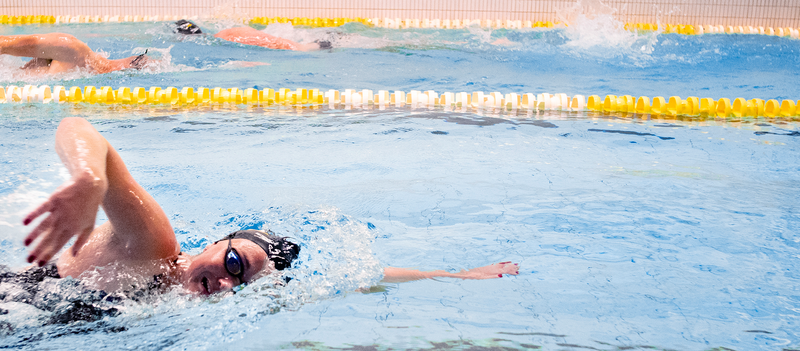Swimming blog - Bilateral Breathing: how to learn it?
Many swimmers like to only breathe to their favorite side. They do not breathe to both sides simply because it doesn’t feel natural. Yet, refusing to breathe bilaterally (to both sides) isn’t the solution. Bilateral breathing has too many benefits to simply skip on it. It leads to a more efficient stroke by making it symmetrical and balanced. A balanced stroke ensures similar workloads on both sides, your weakest side becomes stronger and you become less prone to injury. Luckily it is something you can learn pretty fast, and here is how.
Drills
Breathing bilaterally requires good body rotation. If you only breathe to your favorite side you also only rotate to that side. Not being able to breathe to your weakest side, stems from a lack of rotation to that weaker side. A good body rotation is a rotation in which your hips, torso and shoulders all rotate together in a single motion along the long axis of your body.
To learn body rotation we recommend you to isolate the movement with drills, and subsequently implement it into your freestyle. What follows are three of our favorite drills that isolate the body rotation to teach you how to rotate to both sides, which will allow you to breathe to both sides as well.
Body Roll
The body roll is performed with both arms by your side while rotating slowly from side to side. Using a snorkel and fins, allows you to focus on controlling your body rotation while keeping your head stable and your body streamlined. During the roll, keep your head in a neutral faced down position. Slowly rotate to one side with the feet, hips, torso, shoulders all together, by lifting one shoulder out of the water. Repeat that same movement to the other side. Don’t forget to keep a steady kick for maintaining a high body position and propulsion during the body roll. Combine the body roll with freestyle swimming, to implement body rotation into your stroke.
Sidekick
After you've got the rotation a bit under control. You can start to work on the sidekick. During the sidekick you're kicking rotated on your side with one arm stretched out in front of you and one arm by your side, while looking down towards the bottom of the pool. The shoulder from the arm that is placed by your side is out of the water and your legs, hips and torso are also faced to the side. The sidekick enhances your body rotation by working on streamline and balance while being rotated. As you find your balance during the sidekick you can gently turn your head sideways to breath and place your head back down to exhale. Repeat this until you finish the lap. You will notice that breathing becomes much easier especially on the side you use to neglect.
Alternating Sidekick
The alternating sidekick is a follow up of the basic sidekick. Perform the basic sidekick and switch sides every few seconds by doing three freestyle strokes. Go back into a sidekick but now on the opposite side and repeat. Breath in during the sidekick and exhale during the three strokes. Kick steadily, especially when falling back into sidekick to prevent the legs from sinking. This drill will help you to improve your balance and teach you how to breathe while rotating from side to side.

Don’t forget to start the body roll, the sidekick and the alternating sidekick off with fins, as you become better at maintaining your body position you can try without. Also always alternate the drills with a few laps of freestyle to implement the body rotation, and the breathing technique to both sides into your stroke.
Implementation into training
After having practised body rotation and breathing to both sides with the drills mentioned above, it’s time to start implementing bilateral breathing into your training. It takes time to get used to breathing to both sides, which is why we take it step by step.
Start off with the breathing pattern you already feel comfortable at, for most swimmers it's every second stroke. Breathe every second stroke but alternate to which side you breathe every other lap. As long as long as you breathe just as often to both sides, you’re still creating symmetry and balance.

As you get used to breathing on your “weaker side”. It’s time to start to implement breathing every third stroke. Breathing every third stroke is the most balanced breathing pattern, however it can exhaust you quickly due to a lack of oxygen. You can start by breathing every third stroke just once in a while. As you advance you can bring it a notch higher by combining breathing every second stroke with every third stroke. The last step is to breathe every third stroke constantly, except maybe after flipturns or when you feel short of breath. Practise it day in day out, and soon enough bilateral breathing will feel natural.
